I’ve Been Working on the Railroad
Harvey Thomas Vadnais, my granduncle, was the 4th of 7 children born to William and Jennie (Baillargeon) Vadnais. He was born on August 3, 1888 in White Bear Lake, Ramsey County, Minnesota; William was 24 years old and Jennie was 22 years old.1

On August 12, 1888, Harvey Thomas Vadnais was baptized by Father C. Robert at St. Mary of the Lake Catholic Church in White Bear Lake. St. Mary’s was about a block away from the family home where Harvey was born.

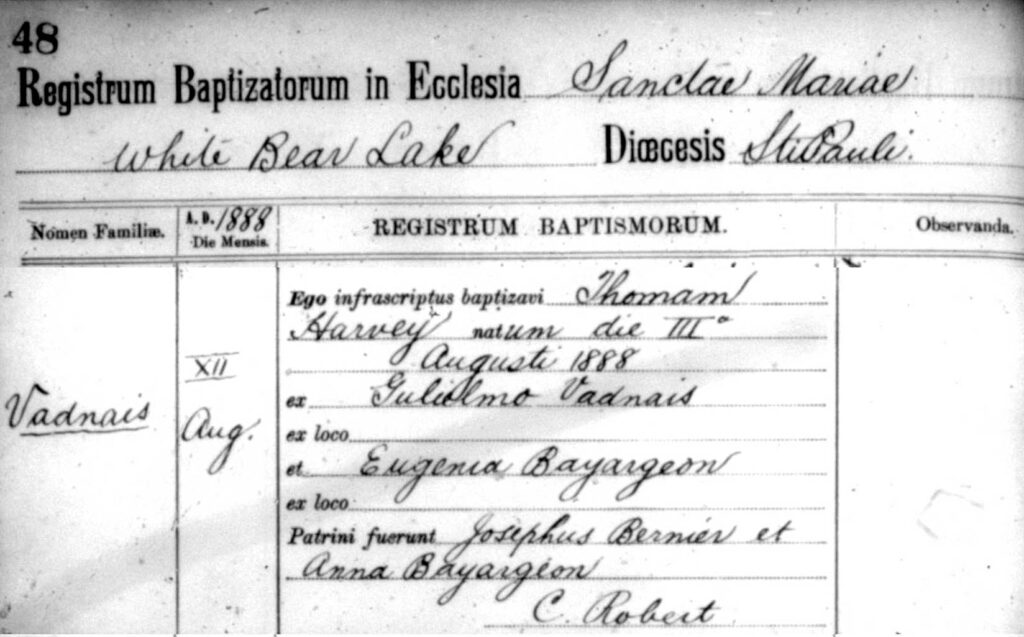
Harvey’s godparents were Joseph Bernier and his aunt, Anna Baillargeon.
Harvey was 11 years old when the 1900 U.S. census was taken which shows that he spent the previous 9 months in school (maybe the 5th or 6th grade) and that he could read and write.4
Harvey was hired on May 17, 1905 by the Northern Pacific Railroad as a wiper, the bottom rung of railroad jobs. He was 16 years old. A wiper would usually work a 12-hour shift at the roundhouse packing the engine’s internal parts with wads of greasy waste. According to company records, he worked at the roundhouse located just a few blocks from his home in White Bear Lake. The pay was $45 per month which would be approximately 18 cents per hour.5 It was a start; he could only go up from there.


On August 20, 1909 Harvey was promoted to locomotive fireman. A fireman was a crew member on the train whose job it was to feed the engine firebox with fuel and assist the engineer as needed. The salary for his new position was $70 per month and the location was Minneapolis. I believe he worked at the Northtown transfer rail yard in northeast Minneapolis. Good for Harvey, he had moved another rung up the ladder!
On the form showing his promotion he was asked to list those that depend on him for support, he listed “Mrs. Jennie Vadnais,” his mother. He also stated on the form that he was 22 years old, weighed 150 pounds, was 5 foot 5 inches tall, had black hair, brown eyes and no peculiar marks. It appears that the form was filled out by Harvey and that he also signed it.6

On July 31, 1913 Harvey was involved in an accident while on the job.7 The details are given below.

Harvey climbed the Northern Pacific Railroad ladder to the highest rung he would achieve when he was promoted to engineer on September 30, 1917.8
World War I had been raging for close to 4 years when Harvey was drafted into the United States Army. On June 24, 1918 Harvey left his Northern Pacific job to become a soldier, a career that was to be short lived.9 The war ended on November 11, 1918 and he was discharged from service on December 31, 1918.10 Harvey had never left training camp at Camp Dodge in Iowa.

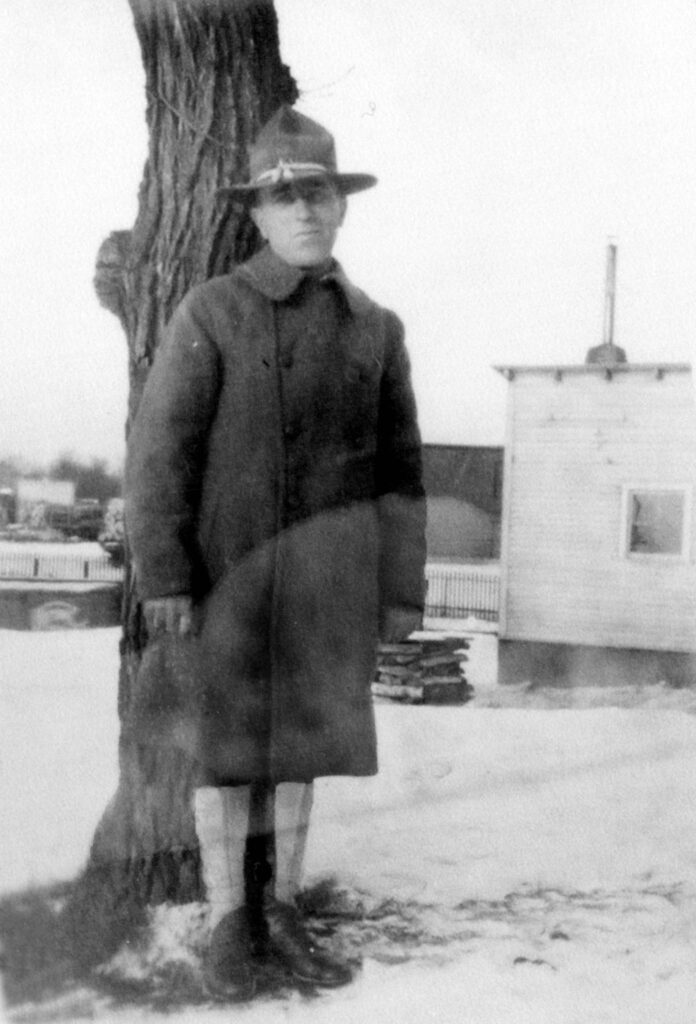
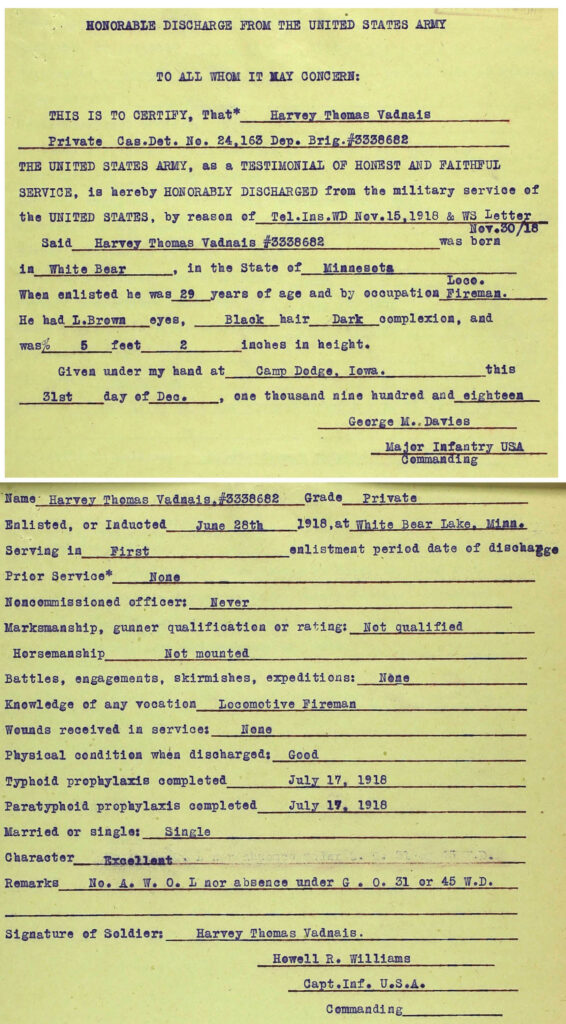
(he is listed as being just 5 foot 2 inches tall)
Harvey returned to his engineering job with the railroad on January 1, 1919.
When the 1920 U. S. census was taken he still lived in White Bear Lake. Both he and his mother were residing with his sister Alma Heckel and her family on Birch Lake Avenue.13 By 1921 he had relocated to Minneapolis. The Minneapolis City directory does not give any address, only his occupation: eng N P Ry [engineer Northern Pacific Railroad].14 The 1923 Minneapolis City directory15 lists the Stratton Hotel as his address and the 1924 Minneapolis City directory shows Harvey’s final permanent address, 205 ½ E. Hennepin Avenue.16 The same address is eventually listed for him on his death certificate17 in 1981, some 57 years later. I think the building on E. Hennepin Avenue where he resided is gone and was replaced with the one that now houses the Polish and Slavic restaurant/deli called Kramarczuk Sausage Company. His E. Hennepin Avenue address was not far from the Northtown rail yard and just a few blocks from Our Lady of Lourdes Catholic Church which I’m sure he attended.
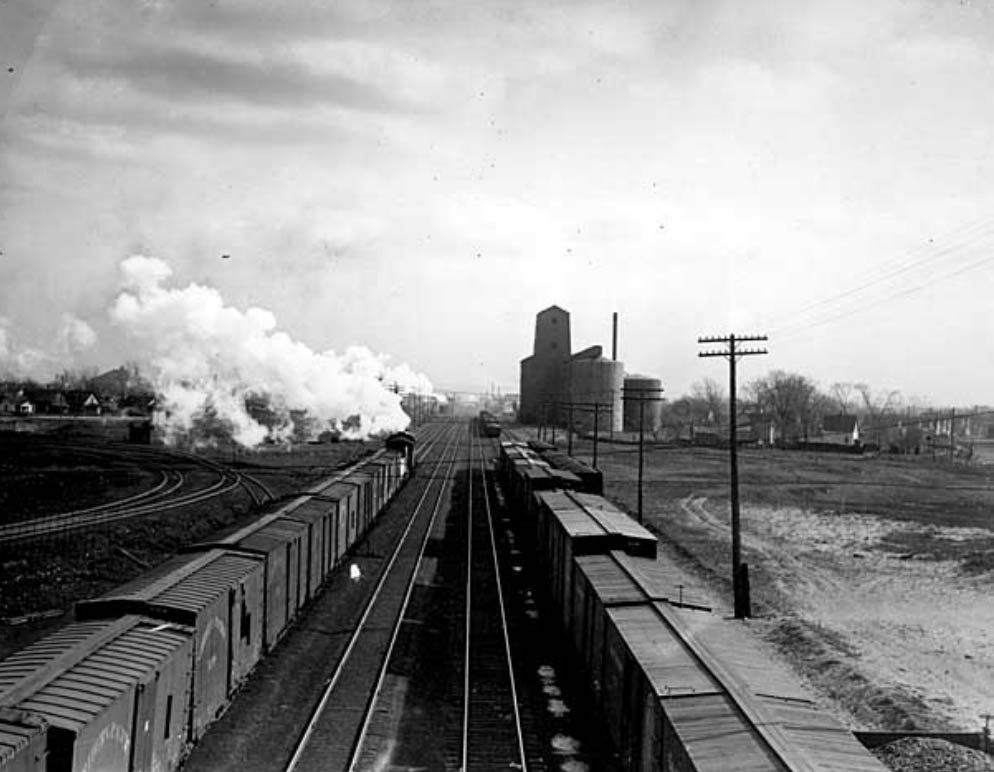
Both the 1930 and the 1940 U. S. census records show Harvey as a boarder in the Brainerd area.18 As a railroad engineer he would have probably traveled the area and had need for short term housing.
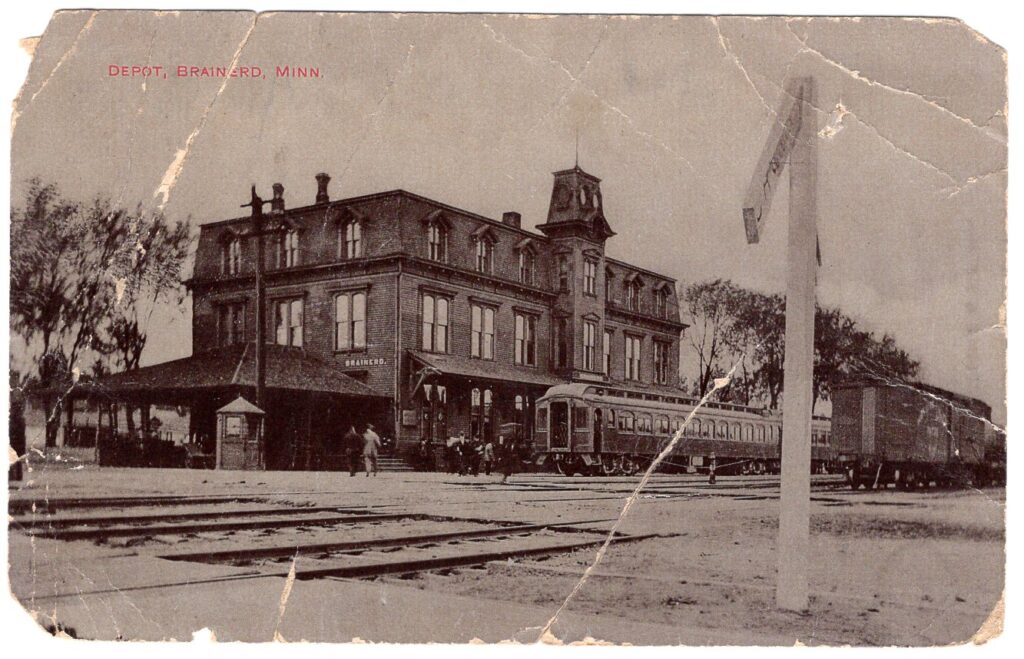
Harvey was involved in “A Bad Wreck” around 1937. I’ve not found the original newspaper article, but here is a transcription of the short article published in The White Bear Press: “Ed Vadnais [either Edmund or Adlore] has brought to The Press office a copy of a Little Falls paper carrying a cut of the scene of a railroad wreck in which two White Bear men were, but who escaped serious injury. Ed’s brother, Harvey T. Vadnais who is well known in White Bear, was engineer on a passenger train standing at the Little Falls depot. Alfonso Burrows, another White Bear man, was on the engine pushing a snow plow. The storm being so bad, visibility was almost zero. The snow plow banged into the passenger locomotive badly wrecking it. Vadnais was thrown to the top of a box car and his fireman under the car, neither being severely injured. Burrows was shaken and bruised but escaped serious injuries. A superintendent of the road had a hip broken. How anyone escaped death is hard to understand.”19
The 1940 U. S. census is the only record I found that gave me a notion of what Harvey was earning as an engineer. He reported that his yearly wages were $2973.20 This does not seem like much until you adjust for inflation. Once that is calculated it is equivalent to about $135,000 per year in today’s dollars.21
The United States officially entered World War II on December 11, 1941. Harvey registered for the draft about 4 months later on April 25, 1942.22 He was a part of the fourth registration, for those men whose year of birth was from April 28, 1877 to February 16, 1897. It was generally referred to as the “Old Man’s Registration” or the “Old Man’s Draft”. He was never drafted to fight, but I’m sure that if he had been called to duty he would have been proud to serve.

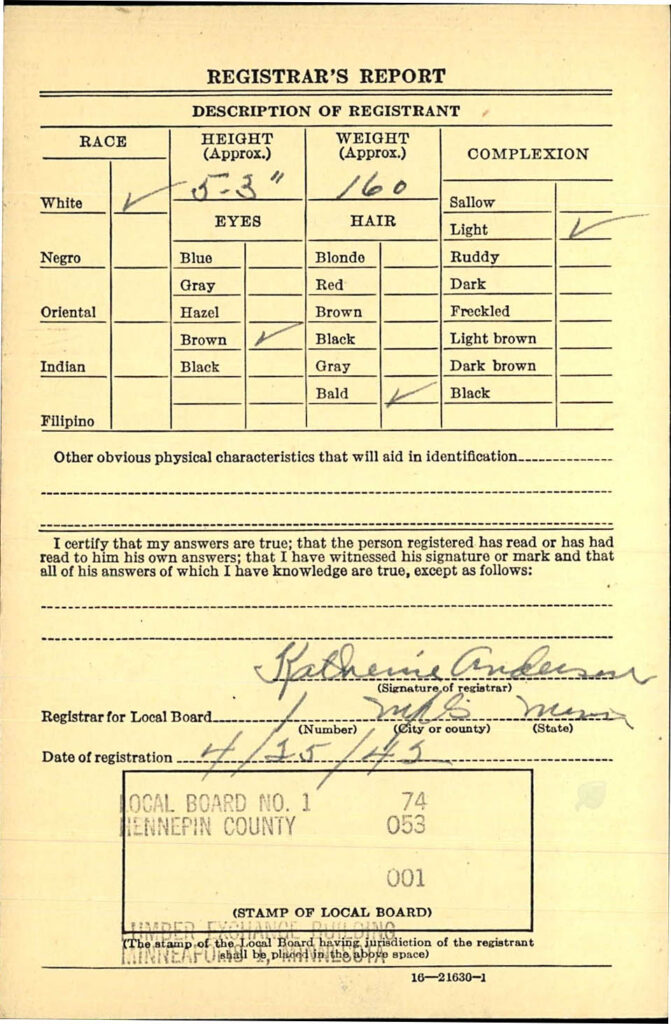
There was another report of an accident on November 12, 1945. The account of the accident was “Personal injury to employee on duty. Shoving 24 cars in on Track 10 at Lower Yard, when leading car struck stone wall at end of track, engineer [Harvey] and fireman were thrown against back of cab.” The nature of the injuries state that Harvey had a bump on the left side of his head and that he struck his left arm.23 It seems to me that those working in rail yards were at high risk for injury.
Harvey retired from the railroad on January 1, 1957 and relinquished his rights to return to service.24 He had worked for the Northern Pacific Railroad for the most part of 52 years. He accepted his pension under the provisions of the Railroad Retirement Act (RRA). The RRA replaced the Social Security Act for rail industry employees.

Harvey, who had never married, passed away July 21, 1981 at the Ramsey County Nursing Home in Maplewood, Minnesota. He was 13 days shy of his 93rd birthday. The death certificate shows his home address as 205 ½ E Hennepin Avenue, Minneapolis. The cause of death listed is “probable ca [cancer] head of pancreas.”25
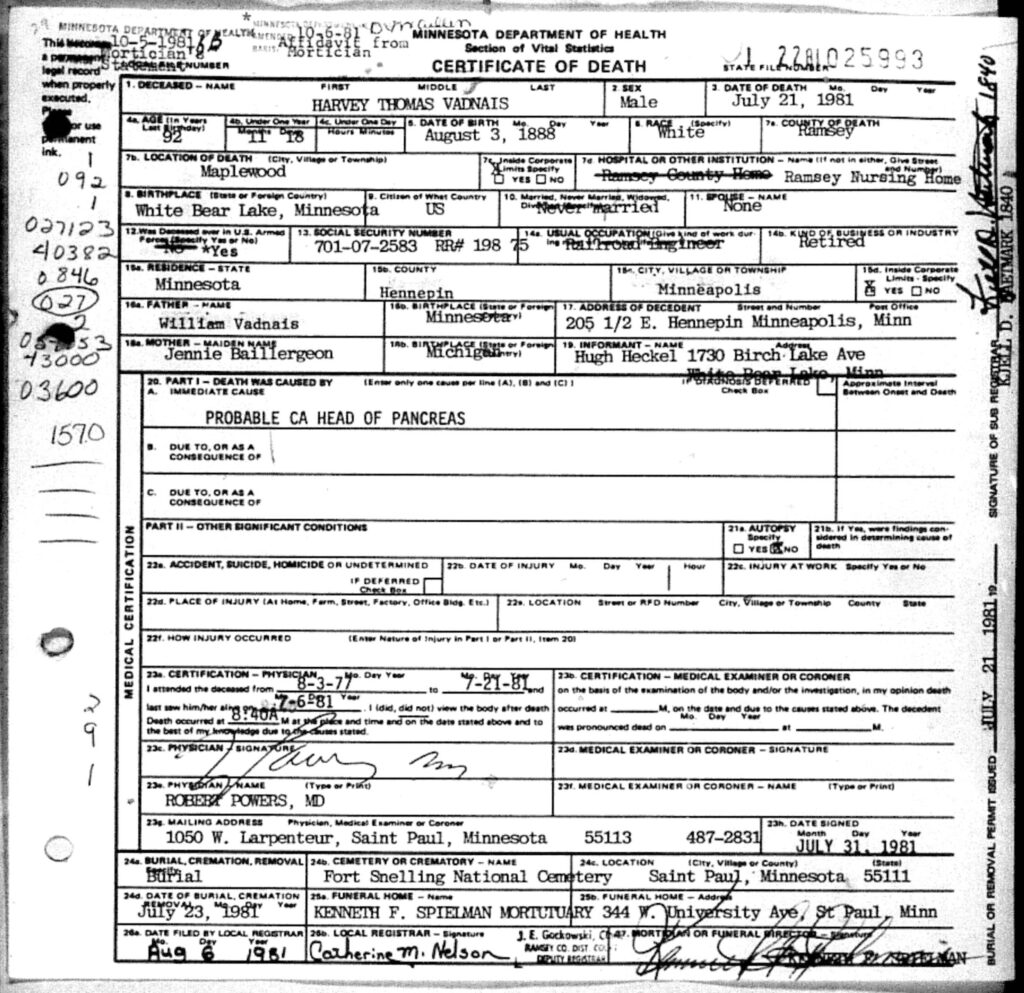
Harvey was buried on July 23, 1981 at Fort Snelling National Cemetery (section U, site 1730), Minneapolis, Minnesota.
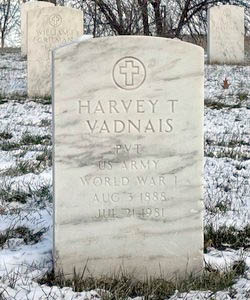
Thanks for visiting, come back soon,
Cynthia
© 2022 Copyright by Cynthia Vadnais, All Rights Reserved
I’ve Been Working on the Railroad Read More »
